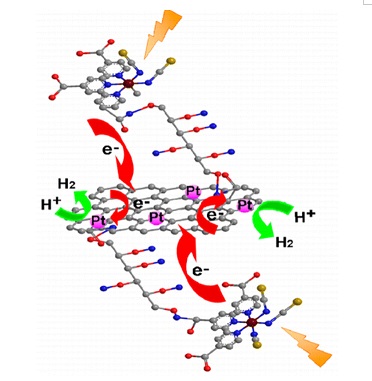Jie Huang†‡, Dandan Wang†, Zongkuan Yue†, Xia Li†, Dongmei Chu†, and Ping Yang*†
† College of Chemistry, Chemical Engineering and Materials Science, Soochow University, Suzhou 215123, China
‡ Key Laboratory of Nano-Bio Interface, Division of Nanobiomedicine, Suzhou Institute of Nano-Tech and Nano-Bionics, Chinese Academy of Sciences, Suzhou 215123, China
J. Phys. Chem. C, 2015, 119 (50), pp 27892–27899
To improve the photocatalytic activity of graphene-based catalysts, an efficient photocatalytic hydrogen evolution system based on black dye N749 covalently functionalized reduced graphene oxide (rGO-N749) was synthesized. The obtained product was characterized with transmission electron microscopy (TEM), atomic force microscopy (AFM), Fourier transform infrared spectroscopy (FTIR), Raman spectra, X-ray photoelectron spectroscopy (XPS), and fluorescence and UV–vis spectroscopy. The results demonstrate that N749 has been successfully grafted on the surface of rGO. The rGO-N749 nanocomposite exhibits high light-harvesting efficiency and covered a range of wavelengths from the ultraviolet to visible light. The efficient fluorescence quenching and the enhanced photocurrent response confirm that the photoinduced electron transfers from the N749 moiety to the rGO sheet. Moreover, we chose Pt nanoparticles (NPs) as cocatalyst loading on rGO-N749 sheets to obtain the optimal H2 production effect. The platinized rGO-N749 (rGO-N749-Pt) demonstrates a quite high photocatalytic activity for hydrogen evolution from water under both UV–vis and visible light (λ > 400 nm) irradiation. The apparent quantum yields are 0.54 and 0.21% at 365 and 420 nm, respectively. These results reveal that the rGO-N749-Pt nanocomposite consolidated the advantages of N749, rGO, and Pt NPs and can be a potential candidate for hydrogen evolution from water under UV–vis or visible-light irradiation.

链接://pubs.acs.org/doi/10.1021/acs.jpcc.5b09483